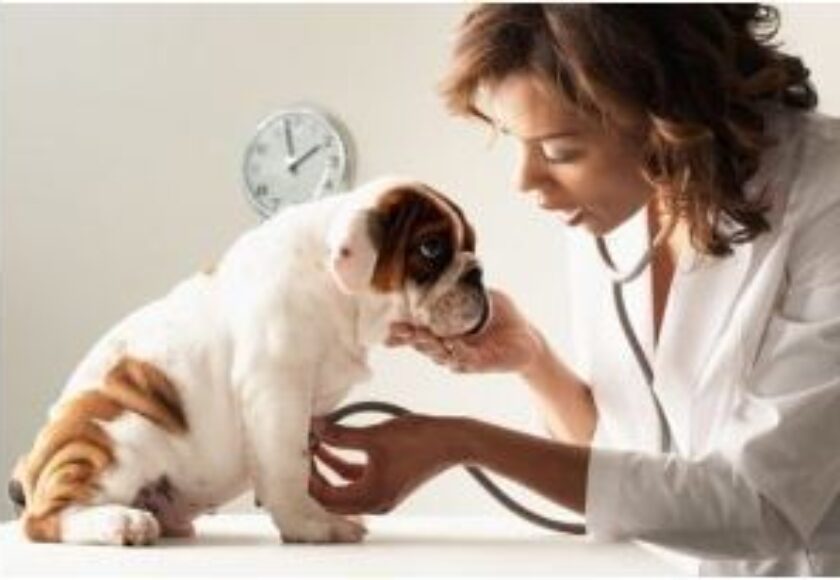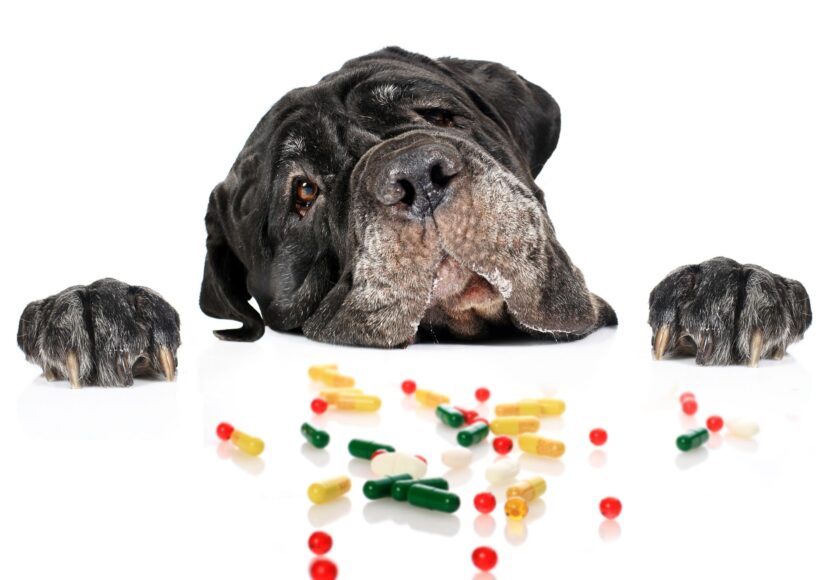Checking your pet’s temperature :
Here are 2 of the best ways to take the temperature in most animals.
1. Instructions to obtain rectal temperature: Some pets will allow you to take their temperature, but others don’t like it at all. It might be easier if you get another person to assist you by holding your pet. If you are using a mercury thermometer, remember to shake it with a quick flick of the wrist until the mercury is below 94 degrees.
1. Lubricate the thermometer with petroleum jelly, ky jelly, or other water-based lubricants. Have your helper hold the head and front part of the body by tightly hugging your pet. Lift the tail and insert the thermometer slowly and carefully into the rectum, located just below the base of the tail.
2. Insert the thermometer about 1 inch and hold in place – two minutes for mercury thermometers or until the digital thermometer beeps. Remove the thermometer and read the temperature.
3. The ear thermometer works by measuring infrared heat waves that come from the eardrum area. The eardrum is considered to be a good indicator of body temperature as it measures brain blood temperature.
4. It is important to place the thermometer deep into the horizontal ear canal to obtain an accurate reading. An ear thermometer such as the pet-temp designed for the cats and dogs works best due to a long arm that allows for the probe to be places deeper into the ear canal.
5. The first few times you use it, take both an ear and rectal temperature and compare. The results should be very close if you are using the proper ear technique. If your dog has a body temperature less than 99 degrees or over 104 degrees, contact your veterinarian or local emergency facility immediately.
6. If your dog has a body temperature less than 99 degrees or over 104 degrees, contact your veterinarian or local emergency facility immediately.
2. Instructions to obtain ear temperatures: the normal ear temperature in dogs is between 100.0 degrees and 103.0 degrees Fahrenheit (37.8 degrees and 39.4 degrees celsius).
1. The ear thermometer works by measuring infrared heat waves that come from the eardrum area. the eardrum is considered to be a good indicator of body temperature as it measures brain blood temperature.
2. It is important to place the thermometer deep into the horizontal ear canal to obtain an accurate reading. an ear thermometer such as the pet-temp® designed for cats and dogs works best due to a long arm that allows for the probe to be placed deeper into the ear canal.
3. The first few times you use it, take both an ear and rectal temperature and compare. the results should be very close if you are using the proper ear technique.
4. If your dog has a body temperature less than 99 degrees or over 104 degrees, contact your veterinarian or local emergency facility immediately.
5. A high temperature could mean your dog has an infection or heat-related illness. do not give crocin/paracetamol, if the temperature is high. Wet the body with water and bring the pet to the clinic. a temperature below normal can be just as serious, indicating other problems such as shock. Place hot water bottles, wrap the pet, especially the paws and bring it immediately to the clinic.
Medicating your pet :
1. You may have to give your pet medication in either liquid or tablet form. Start by wrapping your pet’s body and legs tightly in a towel, leaving only its head sticking out from the towel.
2. If you cradle your pet in one arm, and place your thumb and forefinger on either side of its face, you can force the mouth open by applying gentle pressure to the space between the teeth. This will allow you to deposit a pill in your pet’s mouth.
3. Next, massage or rub your pet’s throat until he or she swallows. If you have to give your pet a liquid medication, use the above procedure but insert the dropper or pilling gun or pilling pocket between the check and teeth and, while lifting the chin upward, slowly dispense the medication.
4. If you need to crush your tablets, never crush two medicines together and give. Crush them separately and give them separately.
Condition your pet to these procedures early so it will not be a pain to medicate later in life. You can practice every day with vitamin tablets and syrups.


